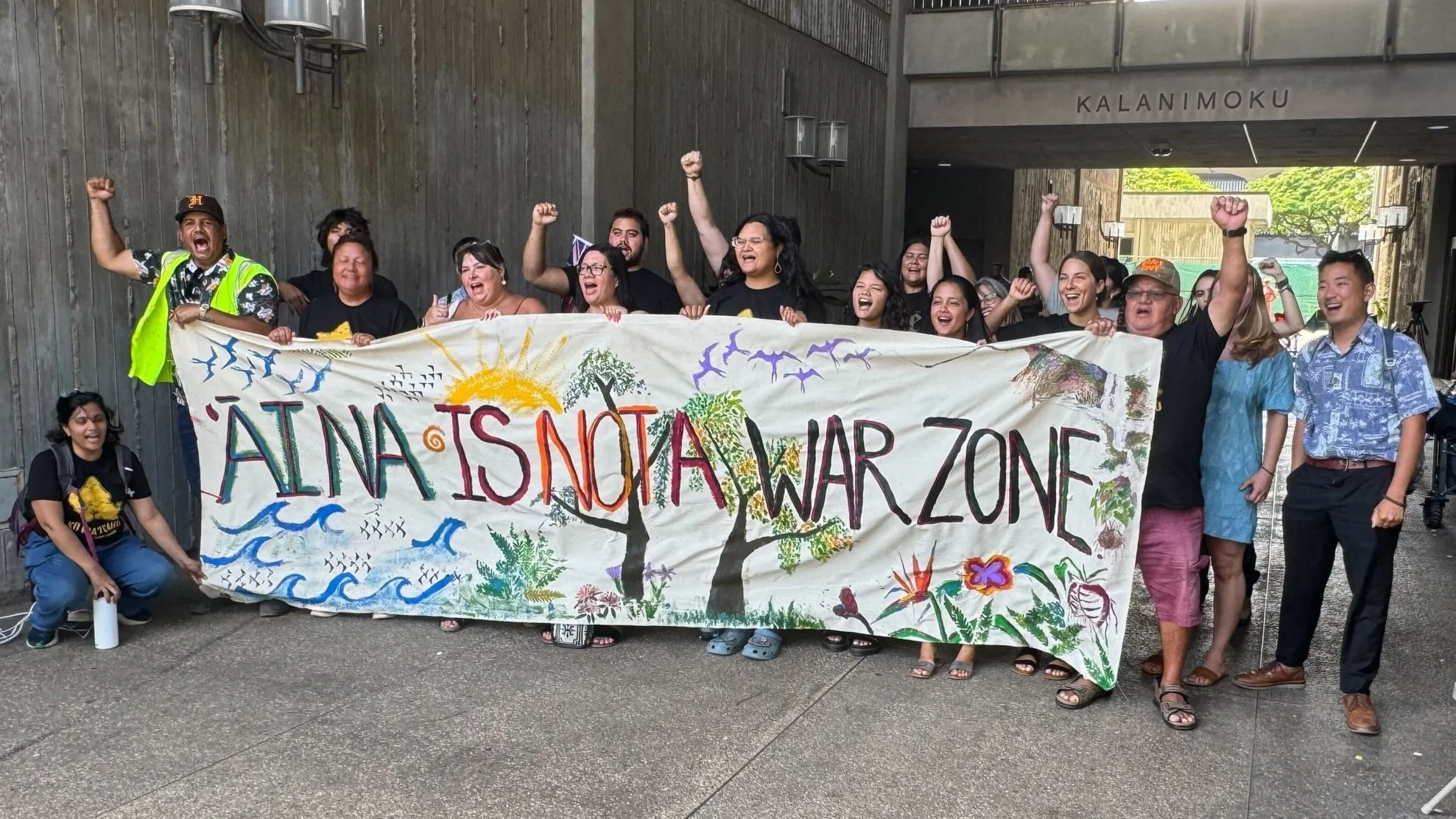BLNR Rejects Army FEIS for Oʻahu Lands
Overwhelming and wide-ranging concerns over legal deficiencies and military accountability prompt another historic decision
By Wayne Tanaka, Chapter Director | Reading time: 4.75 minutes
On June 27, after receiving over 780 pages of written comments and over four hours of verbal testimony, the Hawaiʻi Board of Land and Natural Resources (BLNR) voted 4-1 to reject the US Army’s Final Environmental Impact Statement (FEIS) for the “retention” of over 6,000 acres of “ceded” lands it has leased on Oʻahu for the last six decades.
The BLNR decision focused on the numerous legal deficiencies identified in the Department of Land and Natural Resources’ (DLNR’s) staff submittal, recommending their non-acceptance of the FEIS. These included:
Inadequate biological studies (both terrestrial and aquatic) that fail to provide sufficient information to assess impacts to biological resources;
Incomplete archaeological surveys that do not cover the full extent of the area needed to determine impacts to historical and cultural resources;
Insufficient consultation with ‘Aha Moku and other key individuals;
Lack of information for the BLNR to conduct a Ka Paʻakai analysis of impacts to constitutionally protected Native Hawaiian rights;
Lack of consideration of conservation district land use restrictions and compliance issues;
Unresolved groundwater concerns; and
Failure to adequately consider staff comments related to the use of state lands for forest reserves once the current leases expire;
among other reasons.
These issues were reminiscent of those raised in the prior month, concerning the Army’s FEIS for the retention of nearly 23,000 acres of “ceded” lands in the Pōhakuloa Training Area on Hawaiʻi Island. The BLNR rejected that FEIS after receiving over seven hours of verbal testimony and over 1,300 pages of written comments.
The Army’s decision to submit such a legally deficient environmental review document for Oʻahu, especially after the issues raised in its Pōhakuloa FEIS, perplexed many.
In addition to the FEIS’ legal deficiencies, testifiers commented on the long history of deep harms to both communities and ʻāina associated with military training and other activities on Oʻahu and throughout Hawaiʻi. Some, including ʻEwa Beach residents, Red Hill impacted individuals, and the Sierra Club, emphasized ongoing harms and threats to public and environmental health that the Army and Department of Defense as a whole have failed to address. These included the ongoing threat of lead exposure for families and children in ʻEwa Beach, due to the Marine Corps’ active use of an open-air firing range located in near proximity to residences, schools, and a popular beach park, where extremely high levels of lead have been detected in the surrounding environment.
The Army Corps’ foot-dragging in remediating a Navy toxic waste dump underlying Radford High School, uncertainty around any planned action to address PFAS found in water sources such as the groundwater underlying the Army National Guard’s Waiawa baseyard, and the lack of any meaningful remediation commitments in the O‘ahu FEIS itself raised doubts as to the willingness and ability of the Army and Department of Defense to prevent or reverse the further degradation of the ʻāina it has been seeking to retain.
Other testifiers highlighted the harms that may continue to be inflicted on local community members due to the Department of Defense’s apparent disregard for environmental protection, or institutional accountability. One commenter who had been poisoned as a result of the Navy’s Red Hill fuel spills shared her struggle with myriad ongoing health effects, including coronary artery disease, chronic heart failure, sleep apnea, bradycardia hypopnea, rheumatoid arthritis, tremors, degenerative spine disease, nerve damage, and hair loss, among other harms. “After all my illnesses - I was bullied!” she recounted. “I feel I have to say something because I don't wanna die from all my illnesses.”
The only BLNR member to vote against the rejection of the Army’s Oʻahu FEIS and in favor of acceptance was Riley Smith, a Hawaiʻi Island developer who was also the lone vote against rejecting the Pōhakuloa FEIS.
The BLNR’s decision to reject the FEIS upheld its constitutional obligations under the public trust, and to ensure compliance with Hawaiʻi’s environmental and land use laws. Nonetheless, the decision was not a foregone conclusion, given the immense political influence held by the Department of Defense and special interest groups such as the Chamber of Commerce of Hawaiʻi’s Military Affairs Committee. Accordingly, much credit for the BLNR’s decision should be given to the organizers, community groups, and individuals, as well as DLNR staff, who endeavoured to remind the BLNR that no one, including the Army, is above the law - and that the foundation of our true security rests in our ‘āina, and in each other.
It remains to be seen what the Army does now with its two rejected FEIS. If it chooses to continue pursuing “retention” of lands it currently occupies on Hawaiʻi Island and Oʻahu, it would need to revise its environmental review documents to address the BLNR’s concerns. Further down the line, it would also need to resolve conservation district and other land use compliance issues, such as through a land use district boundary amendment petition to the Land Use Commission. Any possible land “exchanges” - which may be legally dubious - would also need to be approved by the BLNR and a supermajority of the Hawaiʻi State Legislature.
In the meantime, community members can review the US Navy’s newly released Draft EIS for Kauaʻi, wherein it is seeking to retain 8,172 acres of state “ceded” lands at the Pacific Missile Range Facility. The Navy will be hosting three public meetings on the Draft EIS on Kauaʻi this month—folks are encouraged to attend in-person or virtually (register here). Meetings will be held from 5-8pm: Informational booths from 5-6pm, presentations from 6-6:30pm, and public comments from 6:30-8pm, on:
July 15 at Kauaʻi Veterans Center, 3215 Kauaʻi Veterans Memorial Hwy, Līhuʻe
July 16 at Kekaha Neighborhood Center, 8130 Elepaio Road, Kekaha
July 17 at Sheraton Kauaʻi Coconut Beach Resort, Makai Ballroom, 650 Aleka Loop, Kapaʻa.

